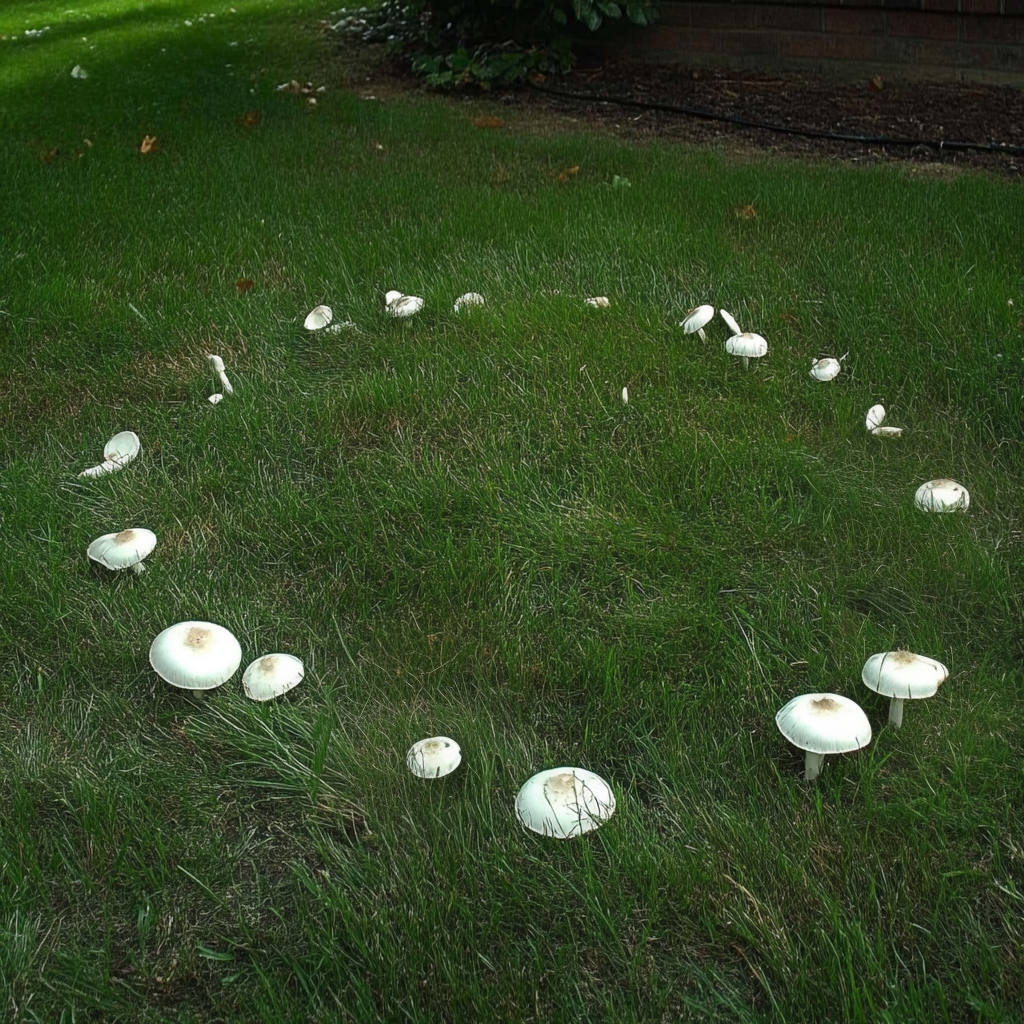- Lawn Turf
- Artificial
- Soil
- Timber
- Composite Decking
- Paving & Stone
Get In Touch With Our Experts Today!
Give us a Call! - Seed & Fertiliser
- Dressing
- Bark

Fairy rings sound sweet, and in most turf cases, they don’t cause too many problems. However, not everyone appreciates the appearance of mushroom circles on their lawn, and some types of fairy rings can cause more problems than others.
Fairy rings are often found in woodland and grassy areas, but can form in any type of turf. So, there’s a chance they can appear in your lawn, on your sports field, or your golf course! This article goes through what fairy rings are, how and why fairy rings form, and what you can do to remove fairy rings from your lawn.
Fairy rings are the result of fungus colonies within the soil. Scientifically known as Marasmius, they form within the soil and produce mushrooms or toadstools above ground to create an arc or circle. These circles can appear in grassy areas and vary from a couple of centimetres to 600 metres in diameter!
Have you noticed a circle or arc of mushrooms pop up in your lawn? You may also spot that the grass within the circle is darker in colour. These are two clear signs of fairy rings. But there are many types of fairy rings depending on the type of fungus. Although the majority are harmless to turf, a few can discolour your grass, turning it a yellowish tinge. You may also spot areas of stunted growth, wilted blades and, in worst cases, dead turf.
Fairy rings’ main purpose and benefit is that they break down dead plant material on your turf. This decomposition of natural matter releases essential nutrients and nitrogen. These feed back into your soil, which your grass roots absorb and thrive on – turning your grass dark green and indicating a higher nitrogen concentration.
Also referred to as elf or pixie rings, fairy rings have many folklore tales that vary worldwide. As magical as those stories are, from a scientific perspective, fairy rings naturally result from fungi colonies within your soil.
The fungus may have been residing in your soil for many years and is often found at the bottom of grass roots. As the fungus sprouts, it forms thin white threads called mycelium, and it’s the mycelium that creates a circular shape. About a year later, mushrooms appear above the soil, following the mycelium’s shape. If you cut through the fairy ring, you’ll be able to spot these threads, looking a bit like spiderwebs. Contributors to fairy rings include layers of thatch and moist conditions, which encourage fungus to form.
The best prevention for fairy rings is preparing your soil correctly before laying turf and investing in good-quality turf. As we mentioned above, fairy rings are formed within the soil, so you may not realise until mushrooms appear. Once you reach this point, fairy rings can be easily resolved.
The key is to break up the water-resistant layer that forms between the fungus and thatch. You can achieve this through aeration (which allows water to reach the grass roots), monitoring and clearing layers of thatch, and fertilising the area. If needed, you can also seed the area and apply topsoil twice a year to help with water drainage and retention.
Typically, fairy rings don’t attack lawns. However, because they can restrict water to the grass roots, it can result in discolouration or stunted growth. With fairy rings, either side of the circle will produce lush, green grass, but the ring itself will be struggling, as this is where water is restricted.
The biggest issue for homeowners and landscapers is that a circle of mushrooms can be unsightly. They can also become a nuisance on certain lawns like golf greens! You should also note that as fairy rings get older, they grow wider! So, it’s a good idea to deal with them as soon as possible.
We’ve seen it all here at GDT&S! So, if you’re struggling with a lawn issue or looking for expert advice to pass on to your clients, we’re here to help. Contact our friendly team or head to our blogs for more support and inspiration.
CALL US NOW ON 01234 818 253